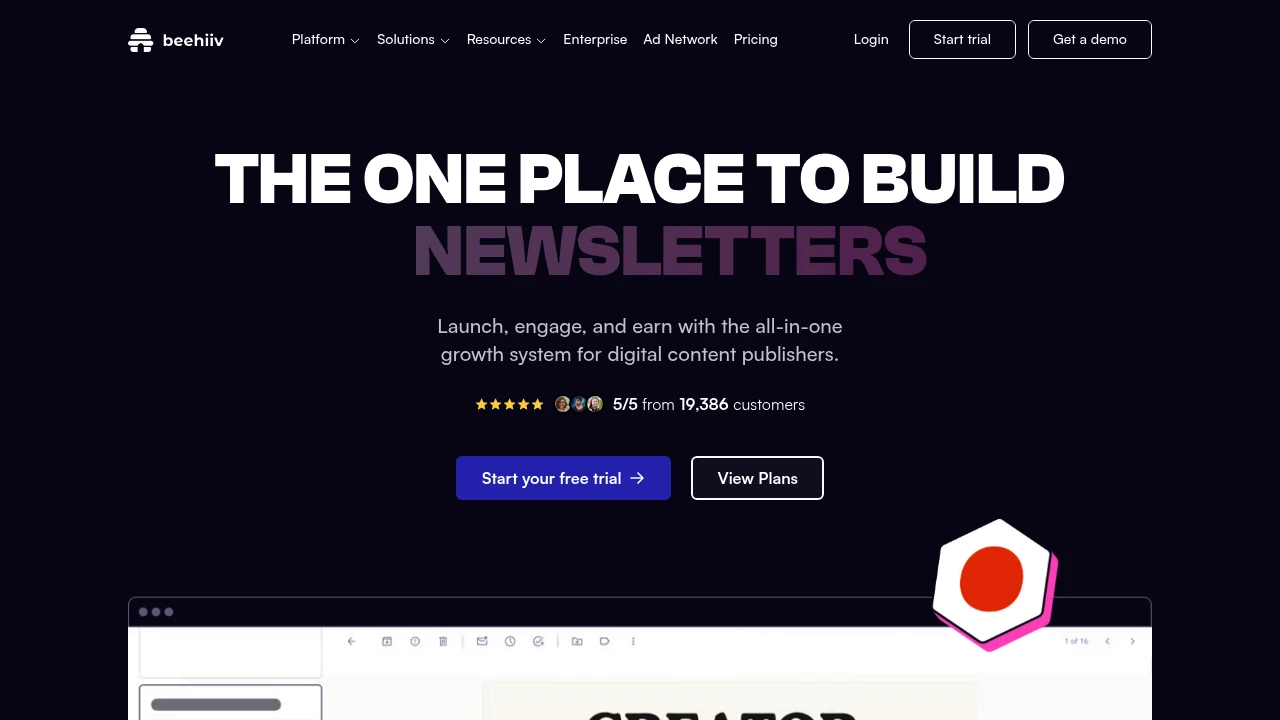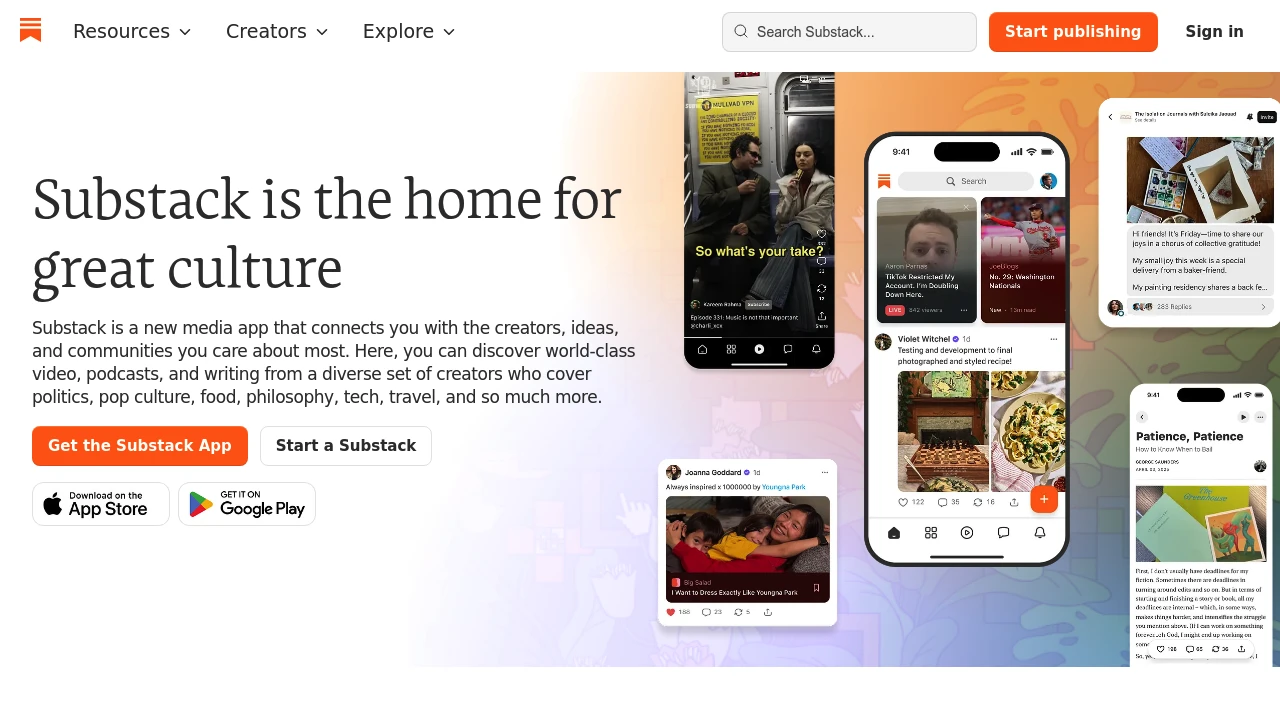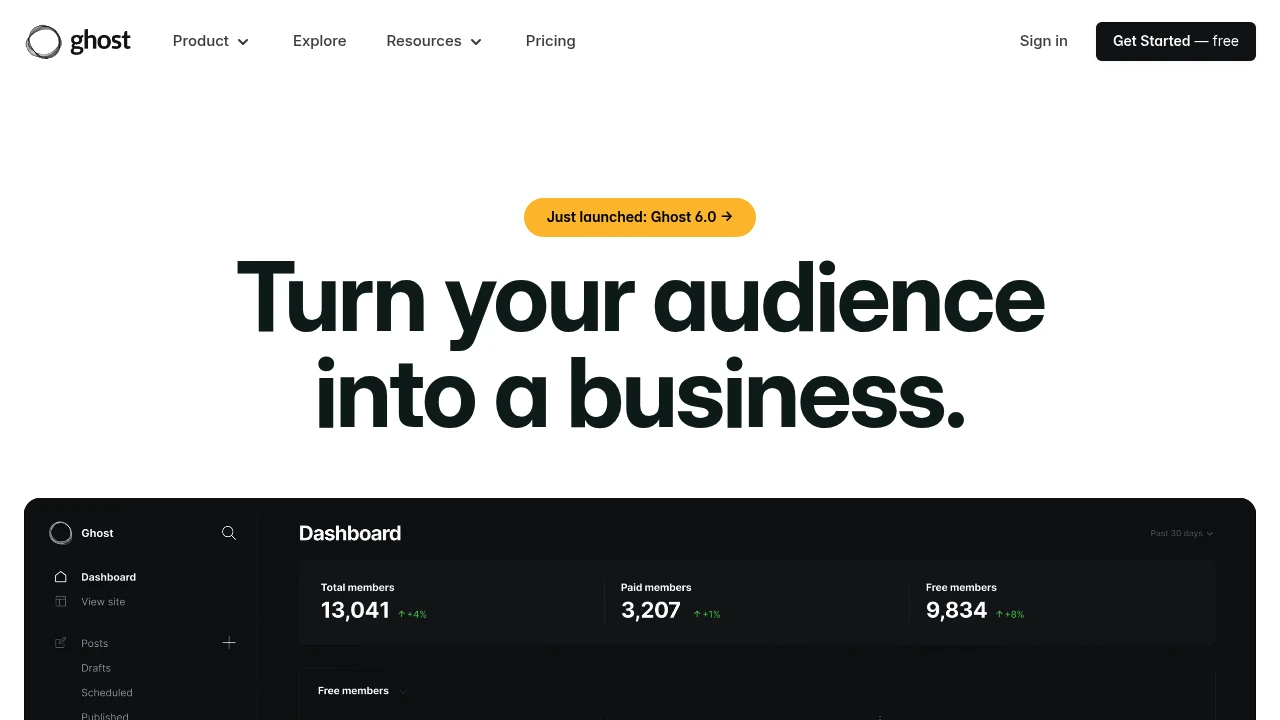The Ultimate List of Newsletter Platforms in 2025
Compare the best newsletter platforms in 2025. In-depth analysis of Beehiiv, Substack, Kit, and Ghost with pricing, features, and recommendations for creators at every stage.

Newsletters have become essential for creators building direct relationships with their audiences. Whether you're a writer, journalist, or entrepreneur, owning your email list gives you independence from social media algorithms and platform changes.
The newsletter space has matured significantly. Where Substack once dominated, several platforms now compete with specialized features for growth, monetization, and automation. This guide covers the leading options used by successful creators in 2025.
Beehiiv

Beehiiv was founded in 2021 by Tyler Denk alongside co-founders Benjamin Hargett and Jake Hurd, after Denk gained experience building the tech infrastructure for the popular business newsletter Morning Brew. The platform brings enterprise-level newsletter tools to individual creators.
Key Features
Beehiiv provides a no-code website builder, built-in ad network, AI-powered tools, automation capabilities, referral programs, and audience segmentation. The Scale plan adds monetization features, surveys, A/B testing, and AI capabilities.
The ad network stands out as a significant differentiator. The built-in ad network connects your content with global brands and handles selling for you. This passive monetization option requires minimal effort once enabled.
Beehiiv introduced a "Name Your Price" feature that lets subscribers decide how much they want to pay for premium content, offering flexibility for both creators and audiences.
Pricing
Beehiiv offers a free Launch plan for up to 2,500 subscribers with unlimited email sends. Paid plans start at $39/month (or $34/month when billed annually) for the Scale plan. The Max plan starts at $99/month, which removes Beehiiv branding, provides priority support, and includes access to their NewsletterXP course.
Pricing scales with subscriber count using tiered pricing within each plan rather than massive jumps. The Enterprise plan serves lists over 100,000 subscribers with custom pricing.
Pros and Cons
Pros:
- Most affordably priced option among major platforms, especially at higher subscriber counts
- Monetization tools (ad network, referral programs, paid subscriptions) included as standard features rather than expensive add-ons
- Better email designer and faster rate of new feature releases compared to competitors
Cons:
- Not recommended for newsletters with smaller lists who plan to do lots of automations and want to monetize by selling digital products
- No transactional email support or SMS capabilities
- Cannot add canonical URLs, which may hurt SEO if publishing content on both Beehiiv and your own website
Ideal For
Newsletters focused on aggressive growth and monetization through multiple revenue streams. Perfect for creators who want built-in tools for ads, referrals, and subscriptions without managing multiple platforms.
Substack

Substack was founded in 2017 by Chris Best, Jairaj Sethi, and Hamish McKenzie. Ben Thompson's Stratechery, a subscription-based tech and media newsletter, was a major inspiration for their platform. The platform pioneered the modern paid newsletter movement.
Key Features
Substack provides a customizable website with built-in newsletter functionality, unlimited email sending, analytics and subscriber dashboards, built-in comment sections and community features, and growth tools including Substack Notes, Recommendations, and a discovery network.
In February 2025, Substack announced the ability to post and monetize videos directly through the Substack app following restrictions on TikTok in the United States. In March 2025, Substack announced it had 5 million paid subscriptions.
The platform emphasizes simplicity. Substack was built to be ridiculously easy to use. You can sign up, start writing, and hit publish within minutes and everything's very intuitive.
Pricing
Substack is free to use. Substack takes a 10% cut of any paid subscriptions, and Stripe (their payment processor) takes 2.9% + 30¢ per transaction. For every $5 subscription, you actually take home about $4.05.
As of August 2025, subscribers can now upgrade to a paid subscription inside the Substack iOS app. When users pay with Apple in-app purchase, Apple takes a percentage of the payment (that could be as high as 30%). Substack will automatically set your iOS app price higher, but you can turn this feature off in settings.
Pros and Cons
Pros:
- Free to use with full access to all features, only taking a cut of actual earnings
- Built-in community features allow readers to comment directly on posts and newsletters
- Strong discovery network helps readers find and subscribe to newsletters aligned with their interests
Cons:
- Once revenue crosses certain thresholds, the 10% fee can outweigh fixed monthly costs of platforms like Ghost or Beehiiv
- No advanced marketing automation capabilities, limited personalization and customization options, and relatively simple analytics compared to more advanced platforms
- Terms limit promotional and commercial content, making it less ideal for driving external sales or product promotions
Ideal For
Independent writers and journalists who prioritize simplicity and content creation over technical features. Best for creators who want to focus on writing without managing complex marketing tools, and who can benefit from Substack's built-in discovery network.
Kit (formerly ConvertKit)

In 2024, ConvertKit officially rebranded to Kit. Founder Nathan Barry wanted to position Kit as a more streamlined and focused platform for content creators, digital entrepreneurs, and online professionals. Kit was founded in 2013 by blogger Nathan Barry who was looking for a more creator-friendly email marketing solution.
Key Features
Kit offers a generous freemium Newsletter plan for up to 10,000 subscribers with unlimited emails, forms, landing pages, and one automated email sequence. The platform allows creators to sell digital products and subscriptions, setting it apart from cheaper alternatives.
The platform provides 28 pre-built automation templates and a visual automation builder that enables complex paths based on actions, events, and conditions. Kit Ads turns newsletters into consistent income streams without pitching brands or managing external sponsorship tools.
Kit's App Store launched as a major upgrade, turning the platform into a creator hub with direct integrations for Canva, Thinkific, Circle, Gumroad, Shopify, and Teachable.
Pricing
The free Newsletter plan supports up to 10,000 subscribers with unlimited emails, forms, and landing pages, though it only includes a single automation. The Creator Plan now costs $39/month (or $33/month when billed annually) for up to 1,000 subscribers. Creator Pro starts at $66/month and includes A/B testing, advanced analytics, engagement scoring, and referral tools.
Kit takes only 3.5% plus $0.30 per transaction for paid newsletter subscriptions (which includes Stripe fees), compared to Substack's 10% plus Stripe fees.
Pros and Cons
Pros:
- Best free email marketing tool for 2025 with 10,000 subscriber allowance
- Multiple monetization options including tiered memberships, one-off purchases, and product bundles
- Clean, intuitive interface built with creators in mind, avoiding bloated dashboards of platforms like Mailchimp or AWeber
Cons:
- Contact-based pricing means costs increase as your email list grows, potentially becoming expensive at scale
- Recent 34% price increase for the Creator Plan, with older $9 or $15 plans retired
- Visual editor lacks drag-and-drop flexibility found in other platforms, though it's fast and self-explanatory
Ideal For
Creators running both newsletters and digital product businesses. Perfect for course creators, coaches, and entrepreneurs who need robust automation alongside monetization tools for ebooks, memberships, or other digital products.
Ghost

Ghost is a powerful app for professional publishers to create, share, and grow a business around their content, offering modern tools to build a website, publish content, send newsletters, and offer paid subscriptions to members. Ghost is an open-source Content Management System from Singapore-based non-profit Ghost Foundation, which also offers the "Ghost Pro" fully managed service.
Key Features
Ghost provides complete control over website and branding, with an editor built from the ground-up for professionals featuring advanced workflows by default. Publishers can deliver posts by email newsletter, segment audiences, and send multiple different newsletters based on preference.
In August 2025, Ghost released Version 6.0 with Social Web (ActivityPub) syndication, allowing publishers to syndicate content across the decentralized social graph including Mastodon, Bluesky, and Threads. Native analytics were also enhanced, shrinking the gap with newsletter networks while maintaining ownership.
For advanced users, Ghost software can be downloaded and installed on your own hosting, giving complete flexibility and ensuring Ghost can never ban you from the platform.
Pricing
Common Ghost(Pro) pricing lands around $18/month for Starter, $29/month for Publisher/Creator, and $199+/month for Business when billed annually. Pricing ranges from $9 to $199 per month depending on number of users, support levels, and usage limits.
Ghost takes 0% platform fees; publishers only pay for hosting and Stripe processing. The platform fee is a flat rate starting at $9/month with 0% transaction fees, meaning fees scale with your business but there are never transaction fees.
Pros and Cons
Pros:
- Zero platform fees on paid subscriptions, only paying for hosting and Stripe processing
- Fantastic SEO performance and ease of use, with sites that are safe, fast, and optimized out of the box
- More flexibility in changing designs, adding new features, and integrating with third-party services compared to Substack
Cons:
- May not work well for multi-site publishers wanting to manage multiple titles from a single interface, since each website is a freestanding Ghost Pro instance
- Admin interface templates are English-only, making it focused on English-speaking journalists
- Lacks built-in network effects and discovery features compared to Substack, requiring creators to build their own growth engine
Ideal For
Technical users or teams wanting full ownership and control. Ideal for publishers serious about SEO, brand customization, and building a professional publication without platform fees eating into revenue. Best suited for those comfortable with light technical work or willing to invest in customization.
Conclusion
Choosing the right newsletter platform depends on your specific goals and priorities.
Choose Beehiiv if you want aggressive growth tools and multiple monetization options built in. The ad network and referral system make it ideal for creators treating newsletters as a primary business.
Choose Substack if you value simplicity and want to focus purely on writing. The zero upfront cost and built-in audience network make it perfect for getting started quickly, though watch the 10% fee as you scale.
Choose Kit if you're building a creator business beyond just newsletters. The automation features and digital product selling capabilities work well for coaches, course creators, and entrepreneurs.
Choose Ghost if you want complete ownership and technical control. The zero platform fees and strong SEO make it ideal for serious publishers willing to invest in building their own growth systems.
Each platform serves different creator needs. Consider your technical comfort level, monetization strategy, and growth priorities when making your choice. Many platforms offer free trials or tiers, making it easy to test before committing.
Zack Ho
@zackwritescode